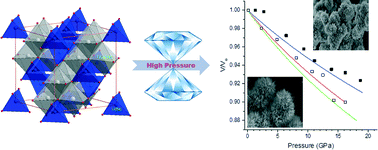Morphology- and lattice stability-dependent performance of nanostructured Li4Ti5O12 probed by in situ high-pressure Raman spectroscopy and synchrotron X-ray diffraction
Abstract
Nanostructured Li4Ti5O12 (LTO) as a promising anode material in lithium-ion batteries (LIBs) has shown excellent yet morphology-dependent performance in LIB operations. However, the structural origin that influences the material performance at the microscopic level remains unclear. Here, using combined in situ Raman spectroscopy and synchrotron X-ray diffraction, we comparatively investigated the structural stability of two nanostructured LTO materials with different morphologies by application of external pressure up to 27 GPa. In particular, nanoflower-like Li4Ti5O12 spheres (LTO-1) and Li4Ti5O12 nanoparticles (LTO-2) were subjected to high pressures using diamond anvil cells and their structural evolutions were characterized upon compression and decompression. Raman measurements show that both LTO materials undergo pressure-induced structural disorder but with different reversibilities upon decompression. X-ray results further confirmed the Raman measurements, and also allowed the quantitative analysis of pressure dependence of the crystal structures. Structural refinements of the diffraction patterns yield morphology-dependent bulk moduli of the two LTO materials, which reveal critical information about the intrinsic lattice strain and vacancies. These different structural characteristics, when compared with another spinel structure of lithiated titanium dioxide, allow the interpretation of the different performance between LTO-1 and LTO-2 for LIB operations. This study thus contributes to the understanding of the important factors that may influence the electrochemical performance and help with the design of new LTO-based anode materials for LIBs.


 Please wait while we load your content...
Please wait while we load your content...